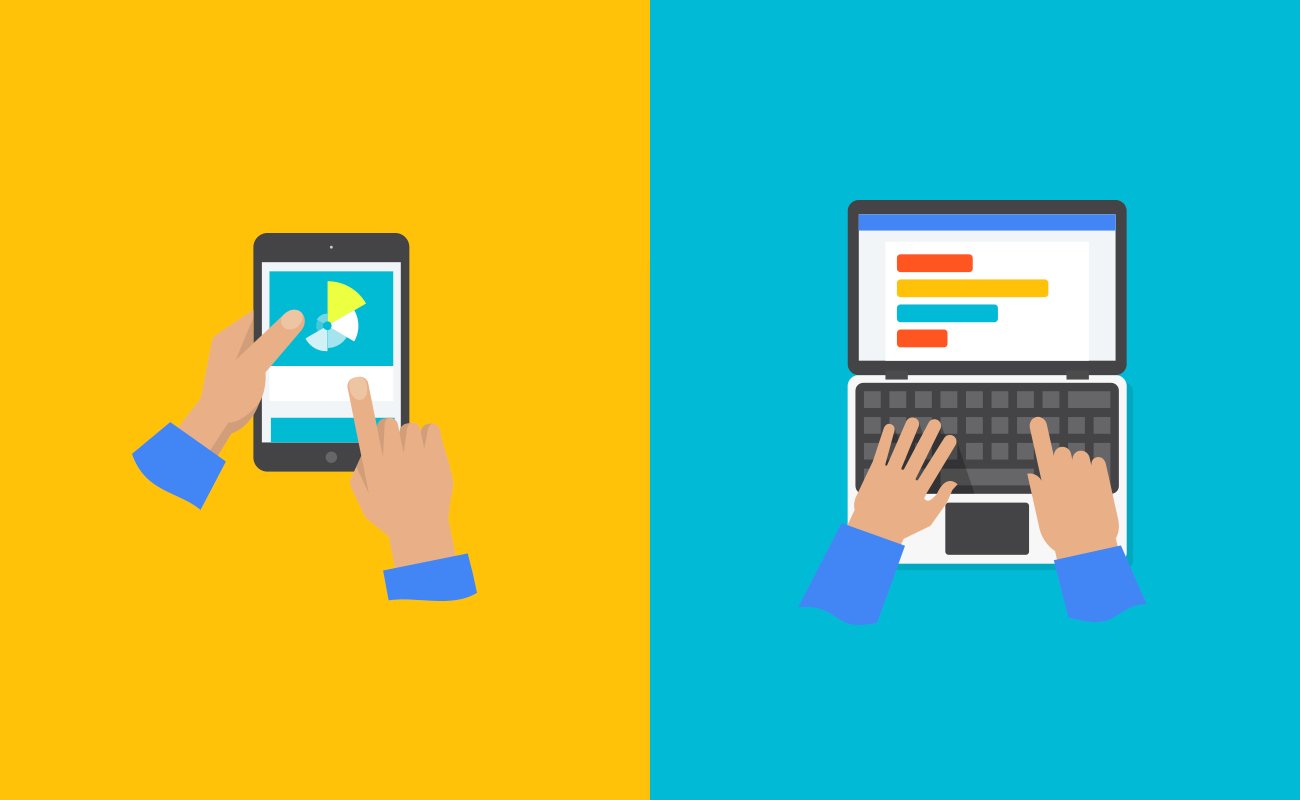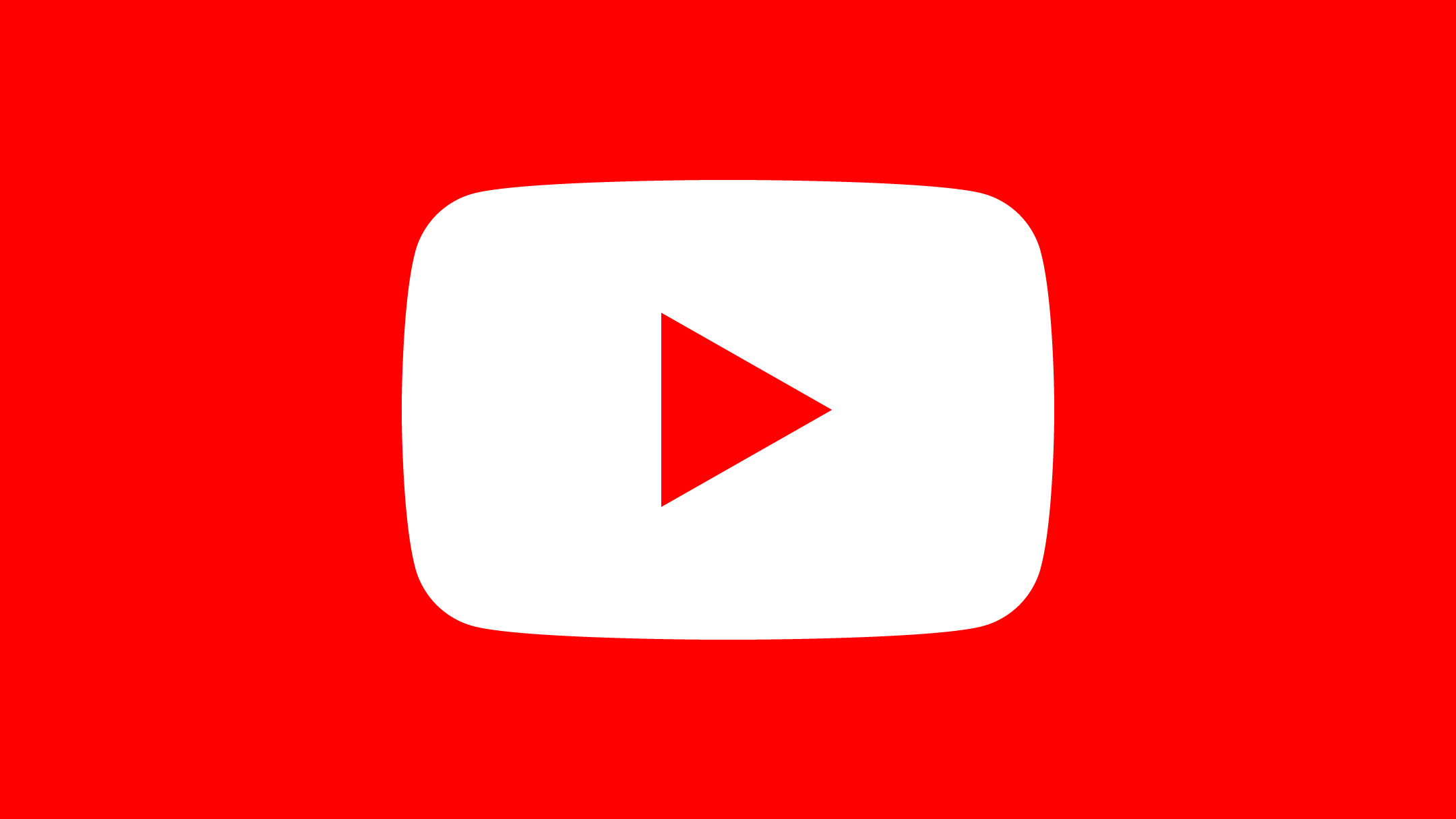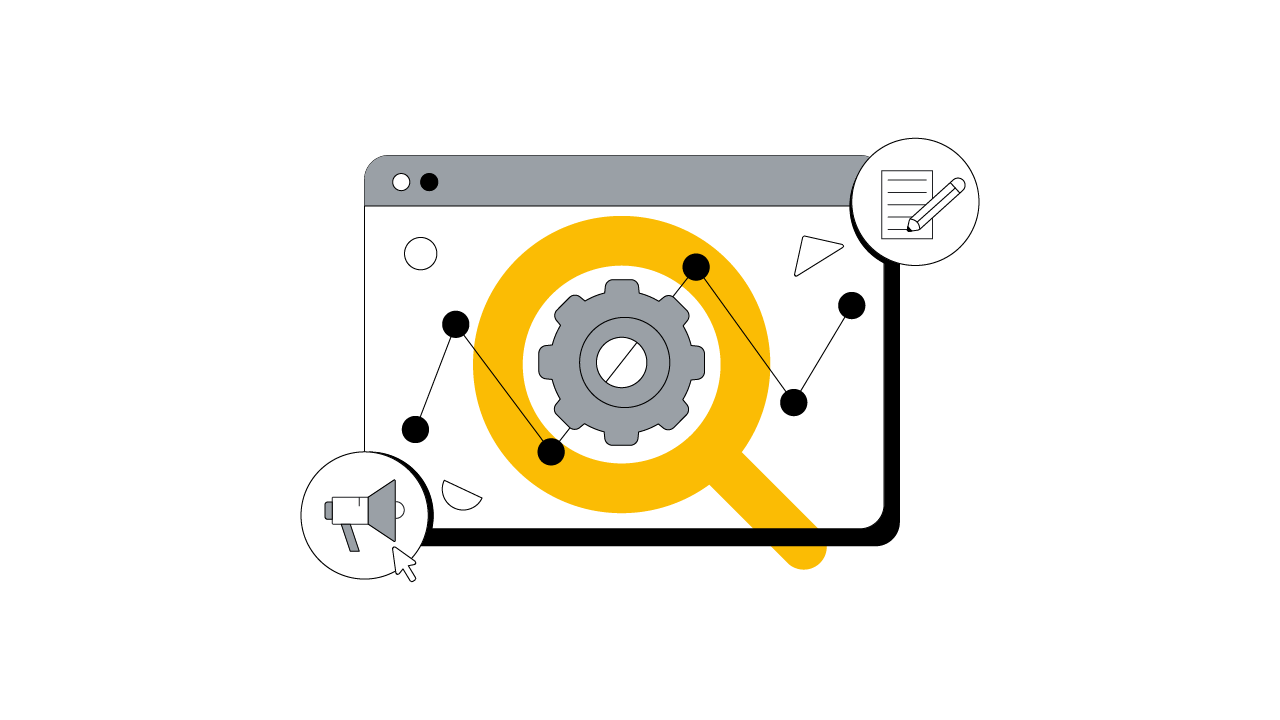The key to building product awareness? Make it hyper-relevant. Here, Sapna Chadha, Google's head of marketing in India and Southeast Asia, breaks down how her team applied local insights, contextual understanding, and rigorous experimentation to serve relevant creative to consumers in India.
Having lived in Delhi for the past decade, studied and worked across the USA, and currently residing in South East Asia, I’ve experienced my fair share of bad traffic, but the most harrowing jams have happened right in my hometown. Once, during the height of monsoon season, flooding and heavy rains delayed my commute by more than four hours. I was stuck in a car and surrounded by flood water in high humidity. It was a scary, uncomfortable trip.
That was a few years ago, but traffic conditions in Delhi—and across India—haven’t improved. In fact, some might argue that they’ve gotten worse. Between weddings, festivals, cricket matches, accidents, and bad monsoon weather, traffic conditions are a constant uncertainty in India’s key cities.
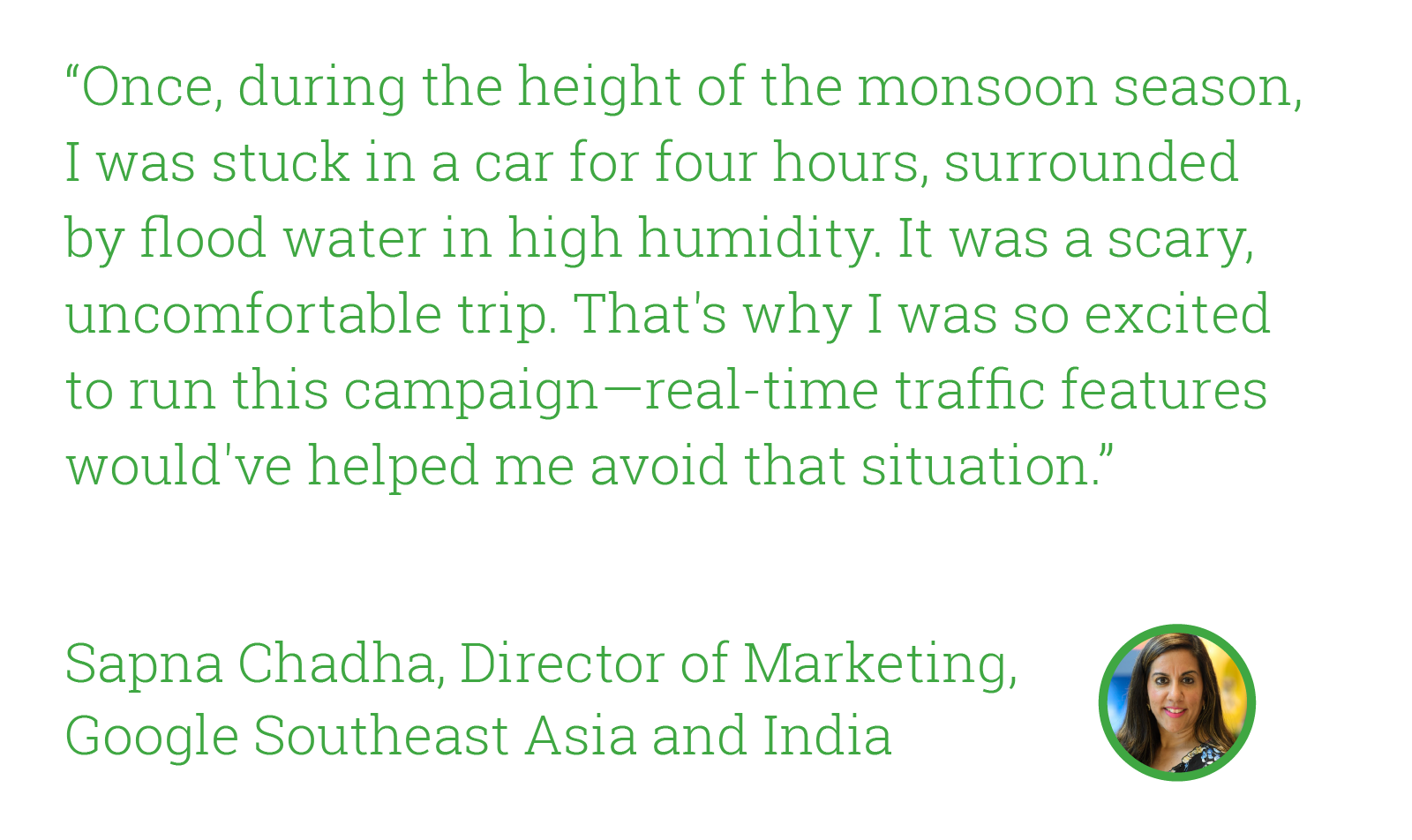
The Challenge
Consumers turn to Google Maps in their moments of need—whether they’re planning a big trip or just commuting to work. They even use it to explore far away places from the palms of their hands via Google Street View. But how do you get those who only intermittently use Google Maps—or don’t use it at all—to become frequent users? Our Google Maps team in India works on this challenge every day.
The team knew that real-time traffic features were really “sticky” and drove daily usage of the app. Having real-time traffic updates and alternative route suggestions can save commuters precious hours that would otherwise be spent in gridlock. Unfortunately, research showed that many users weren’t aware of our real-time traffic feature.
The Campaign: Convincing commuters to #LookBeforeYouLeave
To solve this problem, the Google Maps team rolled out the #LookBeforeYouLeave campaign to remind commuters to check Google Maps’ real-time traffic updates on their phones before hitting the road. The integrated media campaign ran on digital (online video and social) and traditional (radio, TV, and OOH) channels in eight key Indian cities (Mumbai, Delhi NCR, Chennai, Bangalore, Hyderabad, Pune, Ahmedabad, and Kolkata). A crucial channel for our target audience was YouTube, so we used real-time data signals to develop dynamic and contextual digital ads that were served across the platform.
Our hypothesis that locally relevant creative would resonate with users was quickly confirmed once the campaign got off the ground. What’s more, we found that tying the creative to uniquely Indian use cases and habits was effective in driving awareness. Below is a summary of our key learnings:
Lesson one: Capture attention with relevant creative
Today’s mobile-first consumers expect brands to be helpful and relevant when they turn to their smartphones in their moments of need, so we created ads that addressed India-specific traffic conditions. These included common events like cricket and weddings, showing how they can be sources of sporadic traffic jams and how the real-time traffic feature can help alleviate the problem. Our social media listening tools said these ads were particularly well-received by consumers in India.
As our campaign moved into monsoon season, we saw another great opportunity to show the relevance of our product. As poor weather conditions often add to traffic problems in the major cities mentioned above, we used the Google Ads2 weather API—a script that fetches weather information and adjusts bids programmatically—to create a set of YouTube bumper and display ads that were triggered only when it rained. The dynamic, real-time ads encouraged users to check Google Maps before hitting the roads, especially during inclement weather. Users were drawn to the witty, contextual creative, which drove an uplift in awareness compared with our generic, non-weather ads.
Lesson two: Reveal the brand early on
While monitoring our campaign results, we realized that although our YouTube ads had healthy view-through rates, Brand Lift metrics showed there was still room for growth in terms of brand awareness. In other words, crafting locally relevant video content was not enough to increase awareness of the Google Maps app and the real-time feature. We also needed to consider how to integrate the Google Maps brand purposefully into our story. Our challenge was then to identify quick wins that could improve this awareness and be easy to scale.
We experimented with brand placement: Do we begin the ad by introducing it with a slate—a static, one-second image—or wait until the end? After testing two versions of our video ad and measuring audience response using Brand Lift surveys, we found that featuring a slate at the beginning of the ad drove a strong increase in feature awareness, with an average lift of more than 10% in Kolkata, Bengaluru, and Mumbai. The ad with a slate at the end, however, had limited impact on Brand Lift.
The feedback made it clear that it’s important for brands to set the stage early on and clearly communicate who they are and why audiences should care about their products. Thankfully, the Brand Lift surveys allowed us to adjust the campaign creative quickly and efficiently.
Lesson three: Reinforce messages to stay top of mind
Simply creating relevant ads isn’t enough. In today’s cluttered advertising world, brands must stay top of mind with consumers. We knew that our ads had to be served several times to leave a lasting impression among commuters in busy Indian cities, but viewing the same ad over and over again isn’t the best user experience. To remedy this, we explored using different YouTube ad formats to reinforce our campaign message.
We set the stage by explaining how Google Maps can help commuters in India alleviate their traffic woes through long-form 45-second ads. We then showed punchy six-second bumpers to this same audience, highlighting scenarios for which the real-time traffic feature is most effective (e.g. during heavy thunderstorms or when trying to get to an Indian wedding or cricket match on time). This approach worked well for us, driving an additional 6% lift in awareness among users in cities that underperformed in Brand Lift previously.
To further reinforce our message, we utilized OOH channels to run ads simultaneously. For example, we took over billboard space in two high-traffic locations in Mumbai and built a dynamic feature, displaying real-time traffic updates throughout the day for 15 days. Commuters were able to use the real-time information to plan their routes right there and then, making the OOH effort a highly relevant and memorable interaction.
The Results: Contextual campaign resonates with commuters
With YouTube at its core, the #LookBeforeYouLeave campaign achieved our overall goal of driving feature awareness across top cities in India. It also affected our business goal of increasing daily active usage among consumers who had downloaded the Google Maps app on their smartphones. By carefully crafting and reinforcing our message with locally relevant, dynamic creative, the campaign accounted for an 8-10% uplift in feature awareness. The campaign also directly drove 40% of the growth in daily active users in India.
“We made OOH digital for the first time, innovated in contextual marketing, integrated into mainstream TV network news to provide traffic reports, pushed beyond the campaign on social, and more.”
I’m really proud of this campaign. It recently won us a Gold Abby for best use of technology in digital and mobile—one of the most prestigious digital marketing awards in India. We really innovated and went beyond traditional marketing and media tactics. We made OOH digital for the first time, innovated in contextual marketing, integrated into mainstream TV network news to provide traffic reports, pushed beyond the campaign on social, and more.
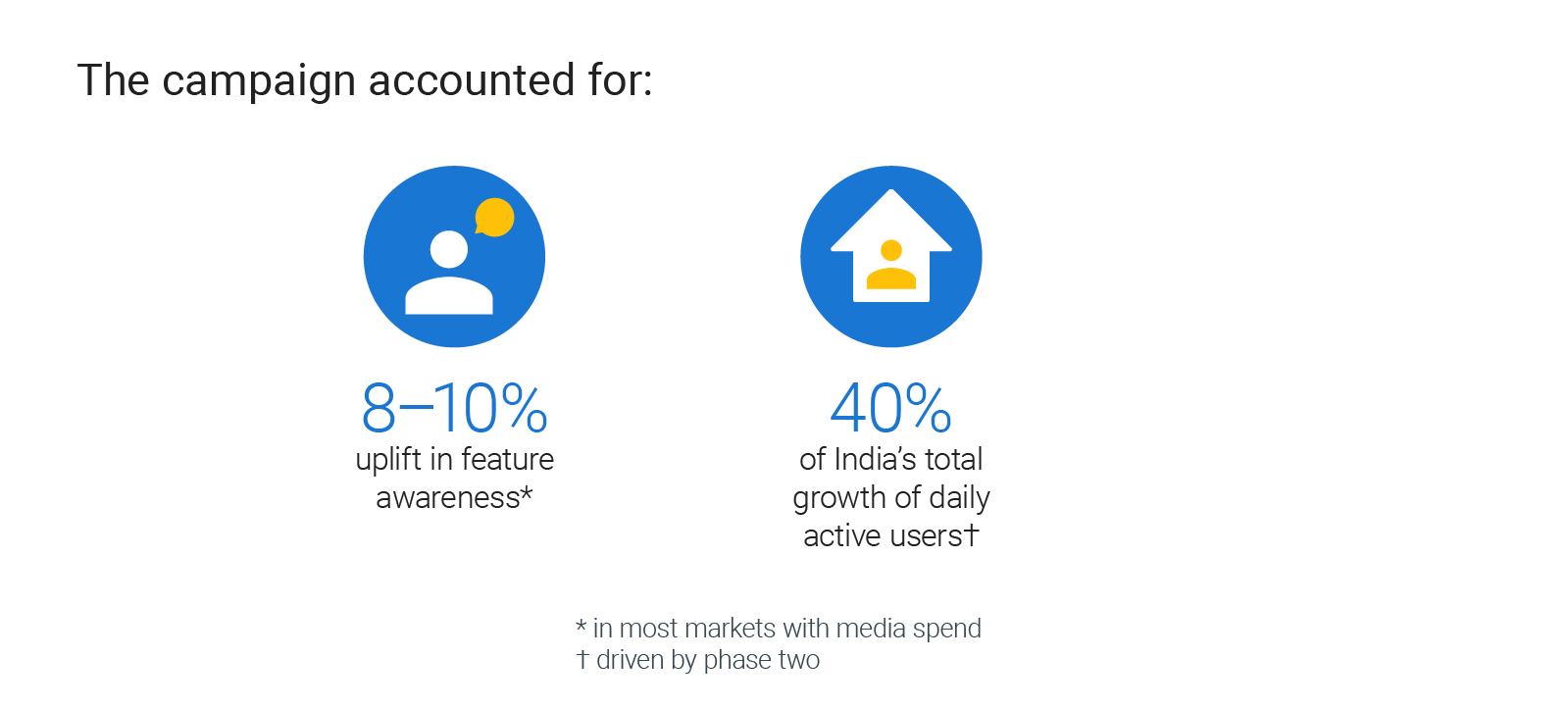
The Technology
Google Ads Weather API
Brand Lift surveys
TrueView
Bumper ads



